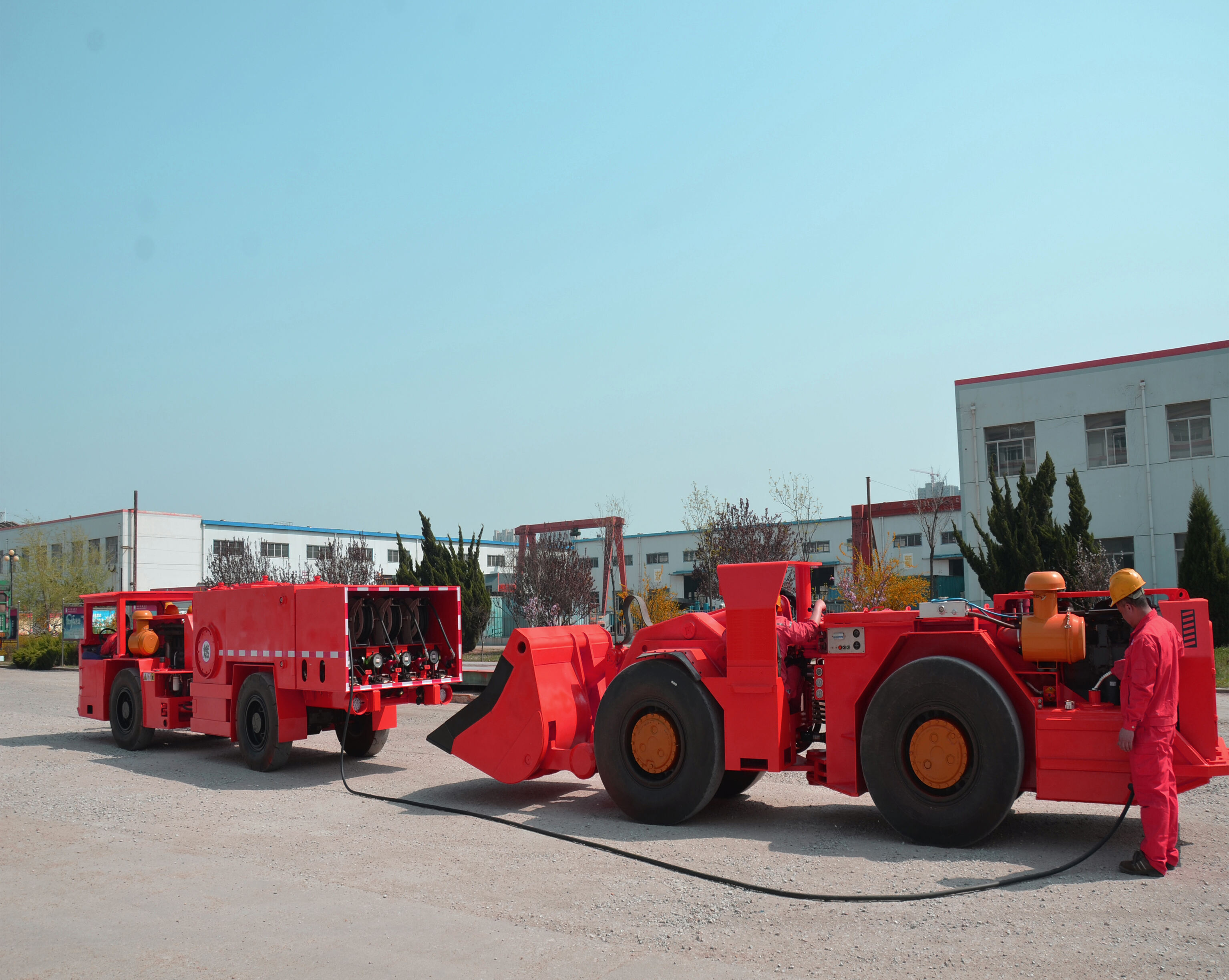Essential Support Equipment in Modern Mining Operations
In the dynamic world of mining operations, mine service vehicles serve as the backbone of daily activities, ensuring smooth and efficient workflow across vast mining sites. These specialized vehicles are purpose-built to handle the demanding conditions of mining environments while providing critical support functions that keep operations running seamlessly. From maintenance tasks to personnel transportation, these versatile machines play an indispensable role in the mining industry's success.
Core Functions and Applications
Maintenance and Repair Support
Mine service vehicles are primarily designed to facilitate essential maintenance activities throughout the mining site. These robust vehicles carry tools, spare parts, and specialized equipment needed for emergency repairs and routine maintenance of mining machinery. Whether it's a broken-down haul truck or a malfunctioning excavator, service vehicles enable technicians to respond swiftly and perform necessary repairs on location, minimizing costly downtime.
The vehicles are equipped with advanced diagnostic tools, welding equipment, and hydraulic systems that allow maintenance crews to address a wide range of mechanical issues. This mobile workshop capability ensures that minor problems don't escalate into major disruptions, maintaining the operational efficiency of the entire mining operation.
Personnel Transportation and Safety
Another crucial function of mine service vehicles is the safe transportation of workers across the mining site. These vehicles are specially designed to navigate challenging terrain while providing comfortable and secure transport for personnel. From shift changes to emergency response situations, mine service vehicles ensure that workers can reach their designated areas efficiently and safely.
The vehicles are equipped with advanced safety features, including roll cages, emergency communication systems, and enhanced suspension systems to handle rough terrain. This level of safety equipment is essential in mining environments where worker protection is paramount.

Technical Specifications and Design Features
Durability and Performance
Mine service vehicles are engineered to withstand the harsh conditions typical of mining environments. Their robust construction includes reinforced chassis, heavy-duty suspension systems, and powerful engines capable of handling steep grades and uneven surfaces. The vehicles' design prioritizes reliability and longevity, ensuring they can operate effectively in extreme temperatures and dusty conditions.
Advanced filtration systems protect vital components from dust and debris, while specialized cooling systems maintain optimal operating temperatures. These technical features contribute to extended service life and reduced maintenance requirements, making mine service vehicles a cost-effective solution for mining operations.
Customization and Adaptability
Modern mine service vehicles offer extensive customization options to meet specific operational requirements. From specialized tool storage systems to custom lifting equipment, these vehicles can be configured to support various maintenance and service tasks. The modular design approach allows mining companies to adapt their service fleet to evolving operational needs.
Manufacturers work closely with mining operations to develop tailored solutions that optimize vehicle functionality. This collaborative approach ensures that each mine service vehicle is equipped with the exact features and capabilities required for specific mining environments and applications.
Operational Impact and Efficiency
Productivity Enhancement
The presence of well-maintained mine service vehicles significantly impacts overall mining productivity. By providing quick response times for equipment repairs and maintenance, these vehicles help minimize operational disruptions and maintain consistent production levels. Their mobility and versatility allow maintenance teams to address multiple issues across the site efficiently.
Strategic deployment of mine service vehicles throughout the mining operation ensures optimal coverage and response times. This systematic approach to maintenance support contributes to improved equipment reliability and reduced unplanned downtime.
Cost Management and ROI
While representing a significant initial investment, mine service vehicles deliver substantial returns through improved operational efficiency and reduced maintenance costs. Their ability to facilitate rapid repairs and regular maintenance helps prevent major equipment failures and extends the life of mining machinery.
The vehicles' contribution to preventing production delays and maintaining equipment availability directly impacts the operation's bottom line. Mining companies that invest in quality service vehicles often see reduced maintenance costs and improved equipment reliability over time.
Future Trends and Innovations
Technology Integration
The evolution of mine service vehicles continues with the integration of advanced technologies. Modern vehicles increasingly incorporate digital monitoring systems, predictive maintenance capabilities, and real-time communication features. These technological advancements enhance maintenance efficiency and enable proactive equipment care.
Emerging technologies such as IoT sensors and data analytics are being incorporated into service vehicle systems, providing valuable insights into maintenance needs and equipment performance. This data-driven approach helps optimize maintenance schedules and resource allocation.
Sustainable Solutions
Environmental considerations are driving innovations in mine service vehicle design. Manufacturers are developing hybrid and electric variants that reduce emissions while maintaining performance capabilities. These eco-friendly alternatives align with mining companies' sustainability goals and regulatory requirements.
Advanced energy management systems and regenerative technologies are being integrated to improve fuel efficiency and reduce environmental impact. These sustainable solutions represent the future of mining support equipment.
Frequently Asked Questions
How often should mine service vehicles undergo maintenance?
Mine service vehicles should undergo regular maintenance inspections every 250-500 operating hours, depending on usage conditions and manufacturer recommendations. Daily pre-shift inspections are also essential to ensure safe and reliable operation.
What training is required to operate a mine service vehicle?
Operators must complete comprehensive training programs that cover vehicle operation, safety protocols, and maintenance procedures. This typically includes both classroom instruction and practical hands-on training, followed by supervised operation hours before independent operation is permitted.
What are the key safety features in modern mine service vehicles?
Modern mine service vehicles are equipped with multiple safety features, including rollover protection systems (ROPS), emergency shutdown systems, fire suppression equipment, advanced braking systems, and integrated communication devices. They also feature enhanced visibility systems and ergonomic designs to ensure operator safety and comfort.

